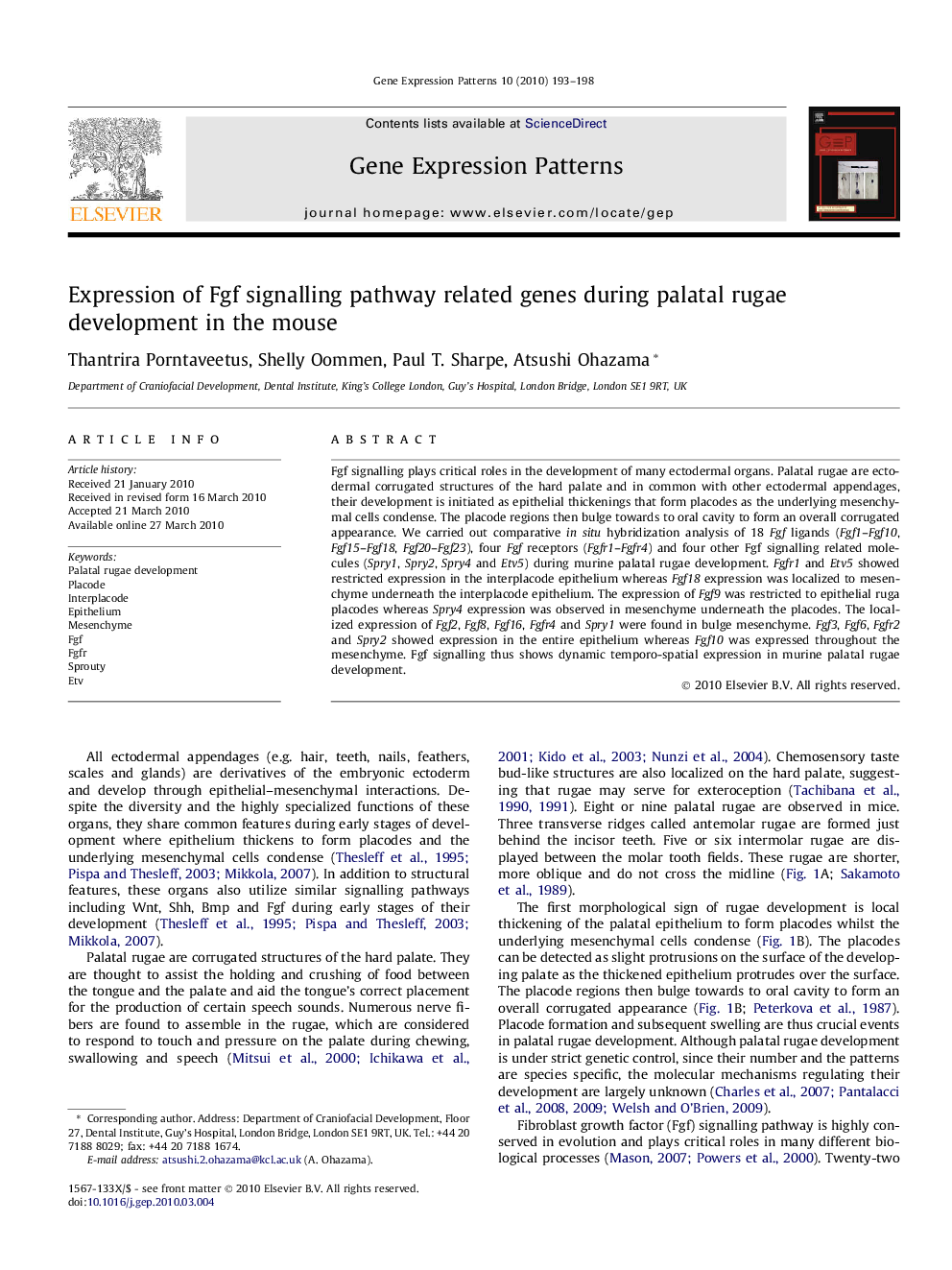| Article ID | Journal | Published Year | Pages | File Type |
|---|---|---|---|---|
| 2182163 | Gene Expression Patterns | 2010 | 6 Pages |
Fgf signalling plays critical roles in the development of many ectodermal organs. Palatal rugae are ectodermal corrugated structures of the hard palate and in common with other ectodermal appendages, their development is initiated as epithelial thickenings that form placodes as the underlying mesenchymal cells condense. The placode regions then bulge towards to oral cavity to form an overall corrugated appearance. We carried out comparative in situ hybridization analysis of 18 Fgf ligands (Fgf1–Fgf10, Fgf15–Fgf18, Fgf20–Fgf23), four Fgf receptors (Fgfr1–Fgfr4) and four other Fgf signalling related molecules (Spry1, Spry2, Spry4 and Etv5) during murine palatal rugae development. Fgfr1 and Etv5 showed restricted expression in the interplacode epithelium whereas Fgf18 expression was localized to mesenchyme underneath the interplacode epithelium. The expression of Fgf9 was restricted to epithelial ruga placodes whereas Spry4 expression was observed in mesenchyme underneath the placodes. The localized expression of Fgf2, Fgf8, Fgf16, Fgfr4 and Spry1 were found in bulge mesenchyme. Fgf3, Fgf6, Fgfr2 and Spry2 showed expression in the entire epithelium whereas Fgf10 was expressed throughout the mesenchyme. Fgf signalling thus shows dynamic temporo-spatial expression in murine palatal rugae development.
